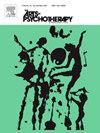工作室艺术治疗对长期自杀损失幸存者的预防:现象学研究
IF 1.5
3区 心理学
Q3 PSYCHOLOGY, CLINICAL
引用次数: 0
摘要
自杀的流行和自杀幸存者的相关心理健康风险是一个社会关注的问题。对于长期自杀的幸存者,缺乏后发研究。本解释性现象学定性研究提出了来自工作室艺术治疗社区设置的访谈结果(N = 23)。基于自杀幸存者工作室的艺术治疗研究,研究了四种后续活动:涂改书籍,装饰盒子,玩偶制作和包装棒。延期的主题和类别如下:自我,自杀死亡的人,他人,以及变化的表征,2。对自传体叙述、持续的联系、精神联系、情感和象征的处理;3. 工作室艺术治疗促进和材料。具体的有意义的本质是受到后期结构和材料的启发,例如用改变的书翻页,在装饰的盒子里包含有意义的物体,玩偶的物理和战术形式,以及装饰棒的分支形式。临床印象表明,具体的预防活动可能有好处。本文章由计算机程序翻译,如有差异,请以英文原文为准。
Studio art therapy postventions for long-term suicide loss survivors: A phenomenological study
The prevalence of suicide and associated mental health risks for survivors of suicide loss represents a societal concern. Postvention research is lacking for long-term suicide loss survivors. This interpretative phenomenological qualitative study presents interview findings (N = 23) from a studio art therapy community setting. Based on suicide loss survivor studio art therapy research, four postvention activities were examined: altered books, decorated boxes, doll making, and wrapped sticks. Themes and categories for postventions were: 1. Self, person who died by suicide, other, and shifting representations, 2. Processing of autobiographical narratives, continuing bonds, spiritual connections, emotions, and symbolism; 3. Studio art therapy facilitation and materials. Specific meaningful essences were inspired by the postvention structure and materials such as page turning with altered books, containing meaningful objects in decorated boxes, physical and tactical form of dolls, and the branching form of decorated sticks. Clinical impressions suggested the possible advantages of specific postventions activities.
求助全文
通过发布文献求助,成功后即可免费获取论文全文。
去求助
来源期刊

Arts in Psychotherapy
Multiple-
CiteScore
3.20
自引率
11.10%
发文量
66
期刊介绍:
The Arts in Psychotherapy is a dynamic, contemporary journal publishing evidence-based research, expert opinion, theoretical positions, and case material on a wide range of topics intersecting the fields of mental health and creative arts therapies. It is an international peer-reviewed journal publishing 5 issues annually. Papers are welcomed from researchers and practitioners in the fields of art, dance/movement, drama, music, and poetry psychotherapy, as well as expressive and creative arts therapy, neuroscience, psychiatry, education, allied health, and psychology that aim to engage high level theoretical concepts with the rigor of professional practice. The journal welcomes contributions that present new and emergent knowledge about the role of the arts in healthcare, and engage a critical discourse relevant to an international readership that can inform the development of new services and the refinement of existing policies and practices. There is no restriction on research methods and review papers are welcome. From time to time the journal publishes special issues on topics warranting a distinctive focus relevant to the stated goals and scope of the publication.
 求助内容:
求助内容: 应助结果提醒方式:
应助结果提醒方式:


